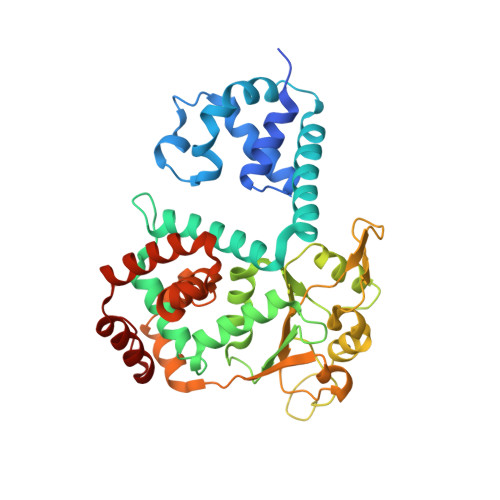Mechanisms of conformational change for a replicative hexameric helicase of SV40 large tumor antigen.
Gai, D., Zhao, R., Li, D., Finkielstein, C.V., Chen, X.S.(2004) Cell 119: 47-60
- PubMed: 15454080
- DOI: https://doi.org/10.1016/j.cell.2004.09.017
- Primary Citation of Related Structures:
1SVL, 1SVM, 1SVO - PubMed Abstract:
The large tumor antigen (LTag) of simian virus 40, an AAA(+) protein, is a hexameric helicase essential for viral DNA replication in eukaryotic cells. LTag functions as an efficient molecular machine powered by ATP binding and hydrolysis for origin DNA melting and replication fork unwinding. To understand how ATP binding and hydrolysis are coupled to conformational changes, we have determined high-resolution structures ( approximately 1.9 A) of LTag hexamers in distinct nucleotide binding states. The structural differences of LTag in various nucleotide states detail the molecular mechanisms of conformational changes triggered by ATP binding/hydrolysis and reveal a potential mechanism of concerted nucleotide binding and hydrolysis. During these conformational changes, the angles and orientations between domains of a monomer alter, creating an "iris"-like motion in the hexamer. Additionally, six unique beta hairpins on the channel surface move longitudinally along the central channel, possibly serving as a motor for pulling DNA into the LTag double hexamer for unwinding.
- Department of Biochemistry and Molecular Genetics, University of Colorado Health Sciences Center, Denver, CO 80262, USA.
Organizational Affiliation:



















